

/en/access2007/creating-and-using-forms/content/
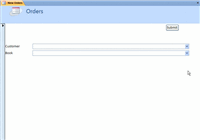 You've already seen how a combo box control can make a form more user friendly. In Access 2007, there are several additional ways you can modify forms to make them easier to use while also increasing the integrity of the database. In this lesson, we'll explain how to use form properties to limit the actions your form users can take. We'll also walk you through hiding fields on a form and adding command buttons to the form.
You've already seen how a combo box control can make a form more user friendly. In Access 2007, there are several additional ways you can modify forms to make them easier to use while also increasing the integrity of the database. In this lesson, we'll explain how to use form properties to limit the actions your form users can take. We'll also walk you through hiding fields on a form and adding command buttons to the form.
Download the example to work along with the video.
You already know that forms can help you increase the integrity of your data by limiting what you see and how you can enter data. You saw that using a drop-down list can make data entry easy. Now it's time to think about the design of your forms from a form user's perspective.
Let's look at the Orders form in our bookstore scenario. The basic form, which was created with the Form command, looks like this:
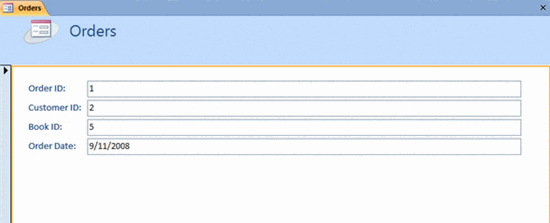 Orders Form
Orders FormThis form is where we would want our user—the store employee—to pair a customer with a book to complete an order. Let's look at the form from the user's point of view:
Access 2007 allows you to set several form properties. Form properties are options that are set in Design view on the Property Sheet, like the one shown below. These options control how the form looks, works, and interacts with the rest of the database.
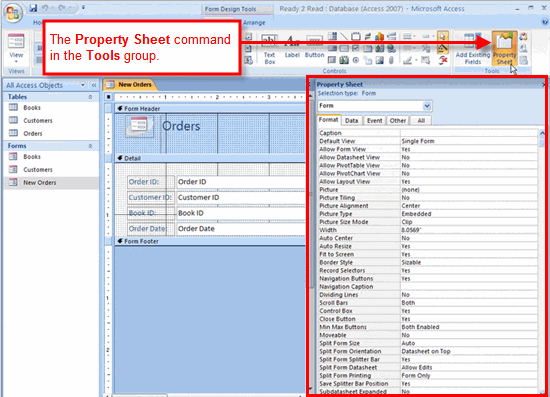 Property Sheet
Property Sheet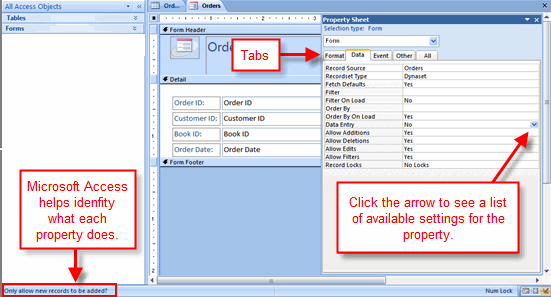 Setting Field Properties with the Property Sheet
Setting Field Properties with the Property SheetTip: Use the tabs to find the specific property you want to set. Use the help available to you in the bottom-left corner of the Access window to know what each property setting does.
There will be times when a field will not be needed on a form. Access 2007 allows you to hide fields by setting the Visible field property in Design view.
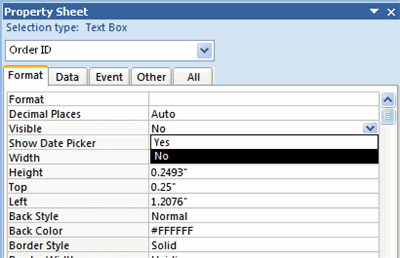 Visible Property Setting
Visible Property SettingFor the New Orders form in our bookstore example, we created user-friendly drop-down lists using the Combo Box command. These drop-down lists help our users identify a specific customer and specific book using more useful information than the Customer ID and Book ID numbers, as seen below.
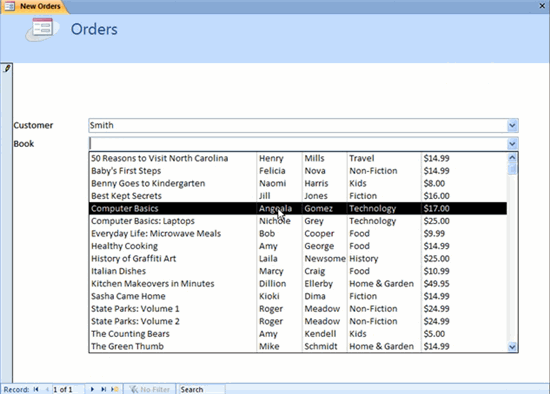 New Orders Form with Drop Down Lists
New Orders Form with Drop Down ListsFor more information on creating combo boxes, visit this lesson.
Sometimes it may be necessary to set field properties from the form itself. For example, on the New Orders form for our bookstore shown below, we want to set up the Order Date field to auto-fill with the current date each time an order is entered. This way, our employees will not have to worry about entering a date on the form because the form will do it for them.
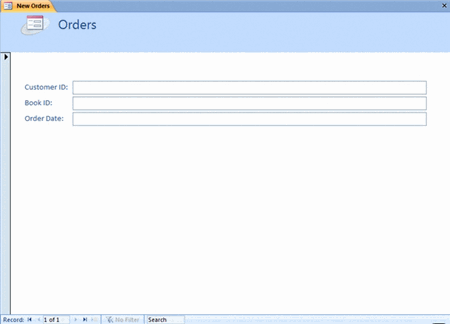 New Orders Form
New Orders FormIn our example, we want to set the Order Date field to auto-fill with the current date. Refer to the picture below. Notice that we have the Order Date field highlighted on the form itself. On the Property Sheet, we have Order Date showing in the Selection type drop-down list.
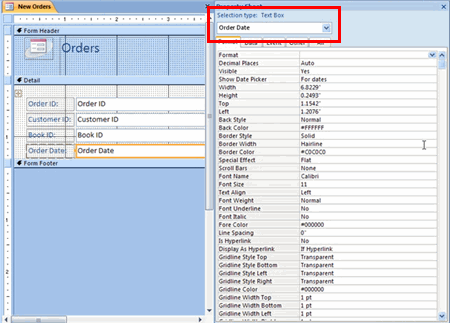 Setting Properties for Order Date on the New Orders Form
Setting Properties for Order Date on the New Orders FormBecause we want the Order Date to auto-fill, we must set the default value to always enter the current date.

 Expression for Current Date
Expression for Current DateThe Expression Builder contains many commonly used expressions for database functions. Explore them by clicking the various files in the lefthand column.
Another way to make a form more user friendly is by adding command buttons to the form. Command buttons are a quick way for form users to take a specific action. These command buttons are grouped into categories of actions, including:
 Button Command in Controls Group
Button Command in Controls Group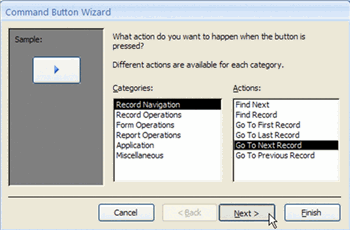 Command Button Wizard - Step 1
Command Button Wizard - Step 1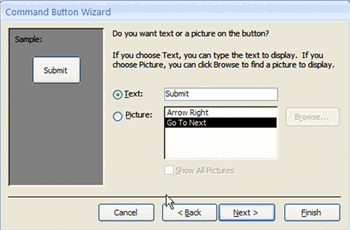 Command Button Wizard - Step 2
Command Button Wizard - Step 2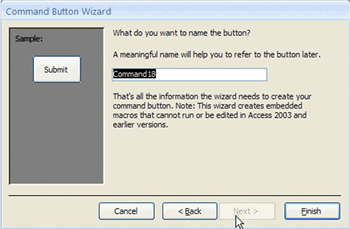 Command Button Wizard - Step 2
Command Button Wizard - Step 2The command button should be operational and appear on the form in Form view.
If you haven't already done so, save the sample Ready2Read database to your computer.
/en/access2007/making-forms-attractive/content/